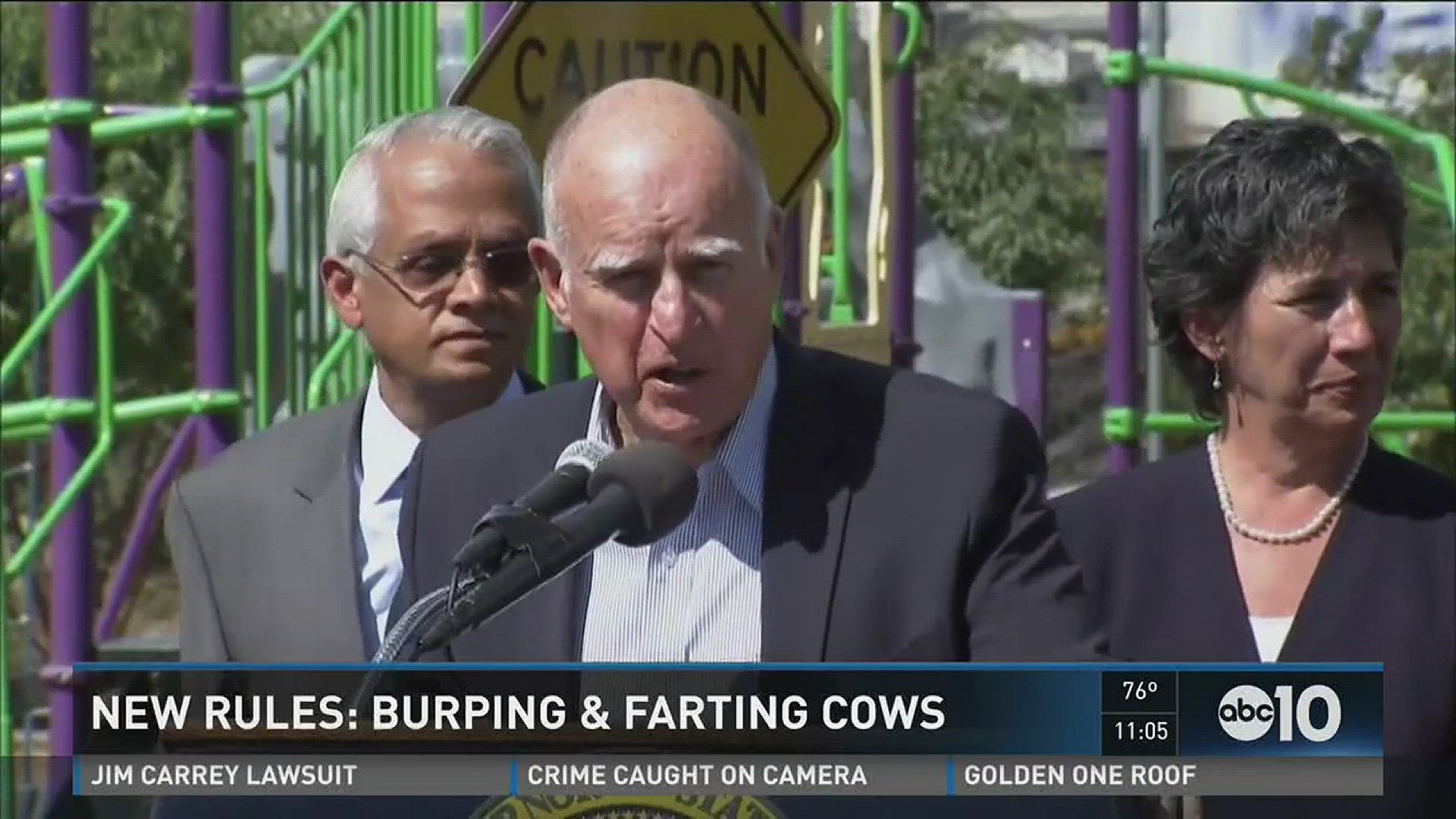How do you smog test a cow?
Vehicles get smog tests to make sure any excess emissions are regulated. But on Sept. 19, Gov. Jerry Brown signed off on a legislation that regulates emissions from cows and landfills. The goal is to reduce gases known as short-lived climate pollutants (SLCPs)- such as methane- which have a high impact on global warming despite staying in the atmosphere for a short time period.
Cows and landfills were responsible for producing a combined 65 percent of methane in the atmosphere, according to 2015 data from the California Air Resources Board.
The new bill states, the board is responsible for monitoring and regulating these emissions with the help of the California Department of Food and Agriculture. The board has to have a strategy in place by 2018, even though the regulations won't take into effect until 2024.
Methane emissions would have to be reduced by 40 percent below 2013 levels by 2030, according to the bill.
You can't install a catalytic converter on a cow like you can a vehicle, so just how will the new bill be regulated?
Dave Clegern, spokesperson for the Air Resources Board, says it will come down to one question:
"How do we make things work in the most cost-effective way?"
There is already a strategy underway, the board is just looking for public comment before making final decisions, according to Clegern.
"What this legislation does is set a timeline for reduction of emissions," Clegern said.
The proposed strategy explains, there are two ways to reduce methane emissions, by capturing it, or by avoiding it's production.
About half of the emissions from California's 5.5 million beef and dairy cows come from enteric fermentation- better known as belching and flatulence- while the other half comes from the manure management practice of using lagoon storage for manure, according to the strategy proposal.
Methane emissions from manure storage can be greatly reduced by switching from flush water lagoon systems, which don't capture methane, to solid-scrape or pasture-based manure management. The alternatives are solid manure disposals, which allow for the manure to be moved and transferred to systems that can capture gases, such as a dairy digester.
Dairy and livestock farmers can use the captured gases for energy to power farm trucks and equipment, in natural gas pipelines and to generate on-site electricity and heat.
However, the board would face challenges if they switched to alternative manure storage management such as issues with air quality and larger farms would have trouble managing open-pasture disposal.
And of course, there's the issue of cash.
"[Dairy digesters] are not cheap," Clegern said. "One of the things we have to work on is how to make them affordable."
Farmers can go through third parties who own and operate dairy digesters, if they don't have the time to operate one or don't want to spend the money on on, Clegern explained.
The digestive process of cows naturally produces methane. The board's proposal suggests breeding animals for lower methane production, as well applying changes to their nutrition and diet.
Researchers would need to figure out if developing new feed could in fact counter the effort by adding to emissions associated with transport and production.
Cows aren't the only one causing problems. Landfills are also going to have to undergo some major changes.
California already has a Landfill Regulation in place that requires owners and operators of certain landfills to install gas collection and control systems, but the board is also looking to cut organic materials from landfills.
Organic materials create methane. The board is working with CalRecycle to create ways to keep organic wastes out of landfills through food rescue and recovery programs, and by recycling and diverting the waste.
Edible food could be saved and used to feed people in need, according to the proposed strategy. Organic material could also be used in compost or for fuel or as mulch for soil erosion control.
However, measuring emissions from landfills is difficult due to their size and location-specific factors such as age, soils, atmosphere conditions, etc., according to the board.
Depending on the strategies used to reduce emissions, farmers could meet the bill's targets at little or no cost, according to the proposed strategy. Some dairy farmers could even make a profit through the energy market.
The board also states that new programs and innovation could generate new jobs and billion of dollars in potential revenue, particularly in the Central Valley and other rural areas- but it will also come at a cost.
CalRecycle and the CDFA both estimate that the state support at least $100 million per year for five years in forms of grants, loans and incentive payments, for both landfill and cow emission strategies respectively.
Local governments would be responsible for covering costs of waste management by collecting fees.
Overall, hard numbers and costs won't be known until 2024, when regulations are enforced, according to Clegern. For now, we have to wait and see if the price of our brie cheese or sirloin steak will go up.
"Part of that will depend on the costs of technologies," Clegern said. "The cost impact remains to be seen."
The bill states there will be three public meetings held before a final decision is made on the strategies used.

